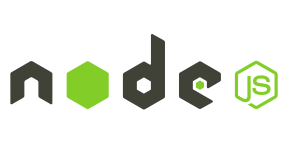So rather than creating a timeline for the project, agile breaks the project into individual deliverable ‘time-boxed’ pieces called sprints. This model prioritizes flexibility, adaptability, collaboration, communication, and quality while promoting early and continuous delivery. Ultimately, all this ensures that the final product meets customer needs and can quickly respond to market demands. The final stage of the software development life cycle is maintenance and operations. This is one of the most critical stages because it’s when your hard work gets put to the test.

They will look at how to best integrate the new software into any existing IT infrastructure the organization may have. Project teams working on the Lean model aim at finding opportunities to cut waste at every step of the SDLC process. Typically, this includes skipping unimportant meetings and reducing documentation.
Information Technology Security and Compliance
This phase is closely tied to documenting all the project specifications and the team usually takes sufficient time to properly document each detail for future reference. But before we run and take off by explaining each of the SDLC phases, let’s first define what a system is. By industry standards, a system is a combination of hardware, software, and human resources that perform the assigned tasks of collecting, processing, and displaying information. Organizations may create a Software Engineering Process Group (SEPG), which is the focal point for process improvement. Composed of line practitioners who have varied skills, the group is at the center of the collaborative effort of everyone in the organization who is involved with software engineering process improvement.
- In many cases, SDLC teams utilize a variety of software solutions to support the varying stages.
- Project and program managers typically take part in SDLC, along with system and software engineers, development teams and end-users.
- Thanks to this systematic and rigidly standardized approach, Waterfall consists of a series of stages and each one needs to be completed before moving on to the next one, without exceptions.
- Process checks include review of timelines and expenses, as well as user acceptance.
- With that foundation as context, the quality and time spent on the planning phase have a direct correlation to the success of the project.
- SDLC done right can allow the highest level of management control and documentation.
In many cases, SDLC teams utilize a variety of software solutions to support the varying stages. For example, requirements may be gathered, tracked and managed in one solution while testing use cases may take place in a completely different https://www.globalcloudteam.com/ solution. The field is often considered a subset of the systems development life cycle. Software development can be challenging to manage due to changing requirements, technology upgrades, and cross-functional collaboration.
Build
To complete assigned tasks, Scrum teams work in sprints, which is a period that lasts between 2 to 4 weeks. To produce high-quality software on time, development teams have to follow highly structured testing and processes to increase efficiency and reduce the chance for bugs to occur. These processes are called Software Development Life Cycles, and many such methodologies exist. Project managers in charge of SDLC need the right tools to help manage the entire process, provide visibility to key stakeholders, and create a central repository for documentation created during each phase. One such tool is Smartsheet, a work management and automation platform that enables enterprises and teams to work better.

These four phases are planning, risk analysis, engineering, and evaluation. The Spiral methodology is considered one of the most flexible SDLC models. Typically adopted for full-blown projects, the Spiral model lets development teams build a highly customized product. Instead of beginning with complete knowledge of requirements, project development teams following the iterative methodology implement a set of software requirements. A Scrum is a form of implementation of the Agile methodology that helps development teams structure complex project requirements.
How to become a software developer
It is very easy to explain the system development life cycle using the analogy of pouring water into glasses. When water is poured from one glass to another, in the end, if done carefully, you will still have a full glass of water without losing a drop. At each stage, you will transfer the most valuable information throughout the project, focusing on the goals and objectives of the project, and making changes to the project where necessary to improve the user experience.

Numerous model frameworks can be adapted to fit into the development of software. The most important distinction between the two SDLC methodologies lies in terms of prioritizing customer satisfaction. The Agile model makes customer satisfaction a priority from the very beginning. Consequently, the project teams involved respond instantly to stakeholder feedback throughout the SDLC procedure.
How does SDLC compare with other lifecycle management methodologies?
Following a DevOps methodology, the developer and operations teams work in tandem to accelerate and innovate the deployment and generation of highly-reliable software products. The first thing that takes place once the product is delivered to the customer is beta testing. All bugs and enhancements are then reported to the developer team working on the project. This stage includes the designing of requirements specified in the very first phase of the SDLC. In addition to assisting in specifying hardware and system requirements, that stage also helps define the overall software architecture. It is the most important phase of the entire SDLC from the perspective of project managers and stakeholders.
Large numbers of software projects do not meet their expectations in terms of functionality, cost, or delivery schedule – see List of failed and overbudget custom software projects for some notable examples. Agile software development uses iterative development as a basis but advocates a lighter and more people-centric viewpoint than traditional approaches. Agile processes fundamentally incorporate iteration and the continuous feedback that it provides to successively refine and deliver a software system. The NIST SDLC integrates risk management activities through the application of the NIST RMF. DevSecOps, an extension of DevOps, is a methodology that emphasizes the integration of security assessments throughout the entire SDLC.
Design
Iterative, rapid application development offers so much flexibility that you run the risk of never completing your project. In contrast, planned, linear style development can yield applications that do not meet the needs of end users even if they meet the stated requirements on paper. System Analysts are knowledgeable in analysis and design techniques to solve business problems via information technology. Oftentimes, system analysts are tasked with identifying opportunity area gaps and generating organizational improvements to reach specific goals. Overall, the System Analyst is a professional who has strong interpersonal, technical, analytical, and management skills. The beauty of software development is that methodologies can be combined to create a hybrid solution that distinctively addresses the unique needs of a project.
They are designed as a checklist to ensure that proper attention is given to all aspects relevant to the secure implementation of developed software. Once the themes have been identified then there are predetermined tasks and techniques to finish the project as defined by the approved methodology of the organization. Want system development life cycle to improve application quality and monitor application performance at every stage of the SDLC? Try out Stackify’s Retrace tool for free and experience how it can help your organization at producing higher-quality software. The Agile SDLC model separates the product into cycles and delivers a working product very quickly.
Spiral Software Development Life Cycle
They may complete bootcamps or earn professional certificates online such as IBM’s Full Stack Cloud Developer. In IT, the term “life cycle” was first used in the 1950s and 1960s to describe the stages involved in developing a new computer system, but it is now commonly used to refer to all stages in the production of any type of software [1]. There are seven stages in the SDLC and six common models that are used for different projects.